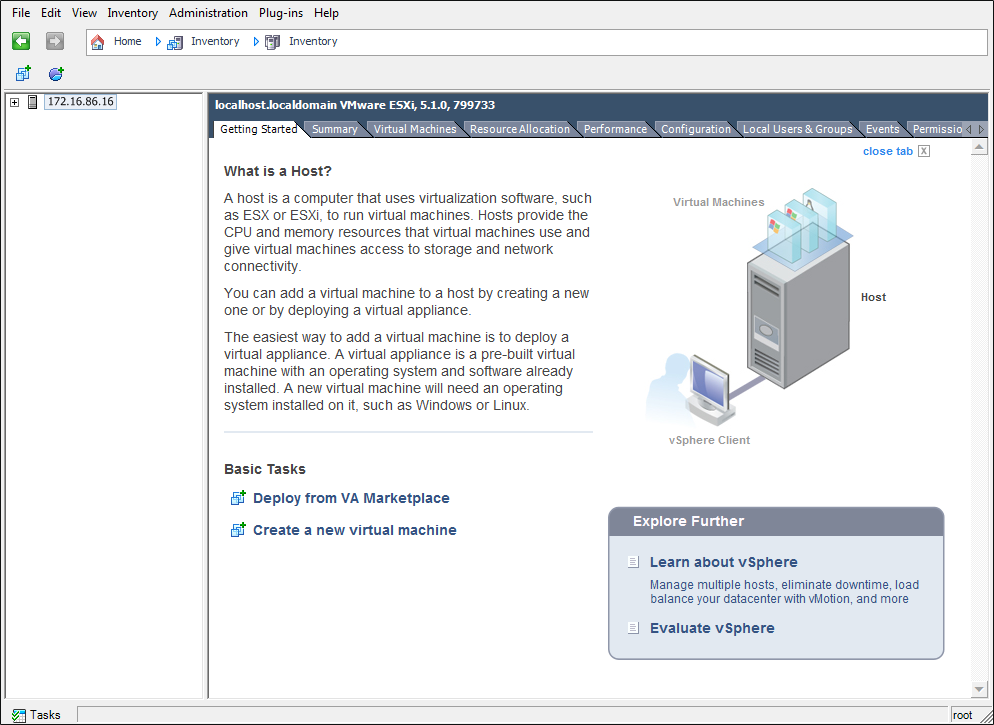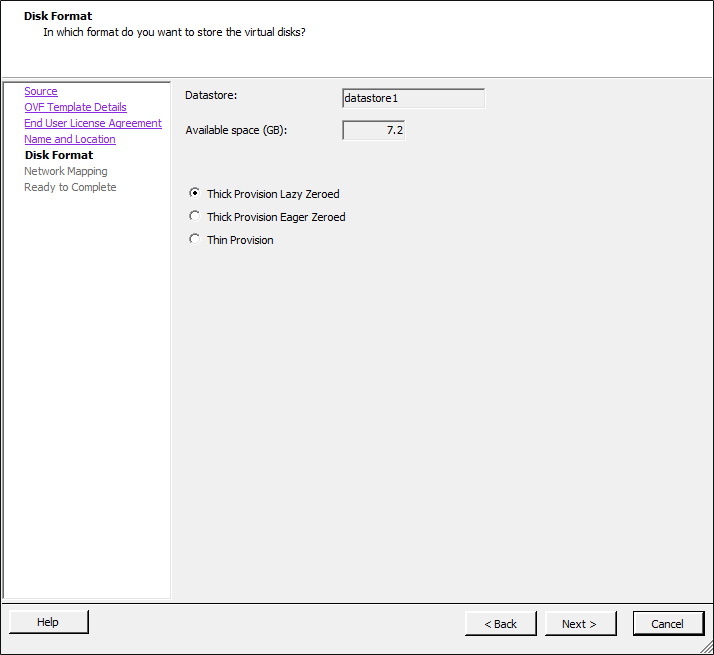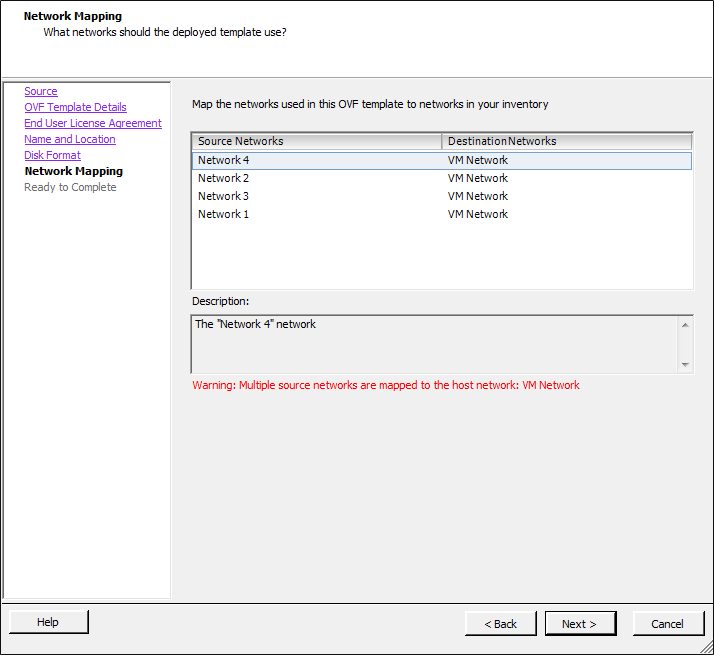Deploying the OVF file
To deploy the OVF file template:
- Launch the VMware vSphere client, enter your server's IP address or hostname, your username, and password, then click Login. The vSphere client homepage opens.

- Select File > Deploy OVF Template to launch the OVF Template wizard. The OVF Template Source page opens.
- Configure the FortiAnalyzer-VM using the OVF Template wizard:
- Click Browse, locate the OVF file on your computer, then click Next to continue. The OVF Template Details page opens.

- Verify the OVF template details. This page details the product name, download size, size on disk, and description. Click Next to continue. The OVF Template End User License Agreement page opens.
- Read the end user license agreement, then click Accept then Next to continue. The OVF Template Name and Location page opens.
- Enter a name for this OVF template. The name can contain up to 80 characters and must be unique within the inventory folder. Click Next to continue. The OVF Template Disk Format page opens.

- Select one of the following:
- Thick Provision Lazy Zeroed: Allocates the disk space statically (no other volumes can take the space), but does not write zeros to the blocks until the first write takes place to that block during runtime (which includes a full disk format).
- Thick Provision Eager Zeroed: Allocates the disk space statically (no other volumes can take the space), and writes zeros to all the blocks.
- Thin Provision: Allocates the disk space only when a write occurs to a block, but the Virtual Machine File System (VMFS) reports the total volume size to the OS. Other volumes can take the remaining space. This allows you to float space between your servers, and expand your storage when your size monitoring indicates there is a problem. Once a Thin Provisioned block is allocated, it remains in the volume regardless of whether you have deleted data.

If you know your environment will expand in the future, adding hard disks larger than the FortiAnalyzer base license requirement and utilizing Thin Provision when setting the OVF Template disk format is recommended. This allows your environment to expand as required while not taking up more space in the SAN than needed.
- Click Next to continue. The OVF Template Network Mapping page opens.

- Map the networks used in this OVF template to networks in your inventory. Network 1 maps to port1 of the FortiAnalyzer. You must set the destination network for this entry to access the device console. Click Next to continue. The OVF Template Ready to Complete page opens.
- Click Browse, locate the OVF file on your computer, then click Next to continue. The OVF Template Details page opens.
- Review the template configuration. Ensure that Power on after deployment is not enabled. You may need to configure the FortiAnalyzer hardware settings prior to powering on the VM.
- Click Finish to deploy the OVF template. A Deployment Completed Successfully dialog displays once the FortiAnalyzer OVF template wizard has finished.

